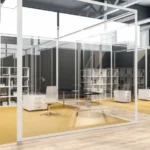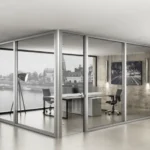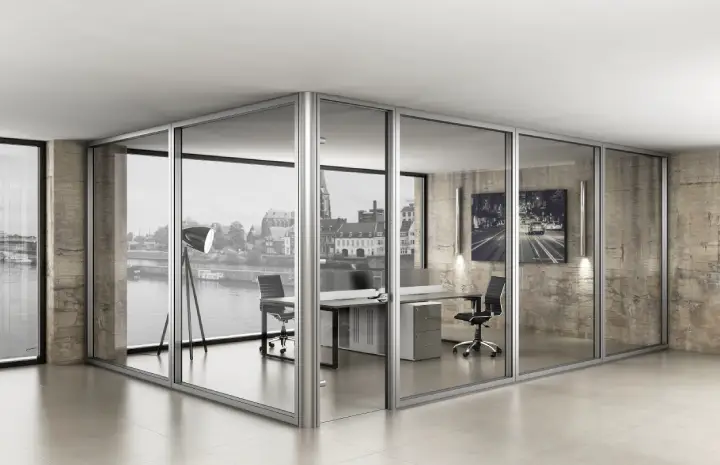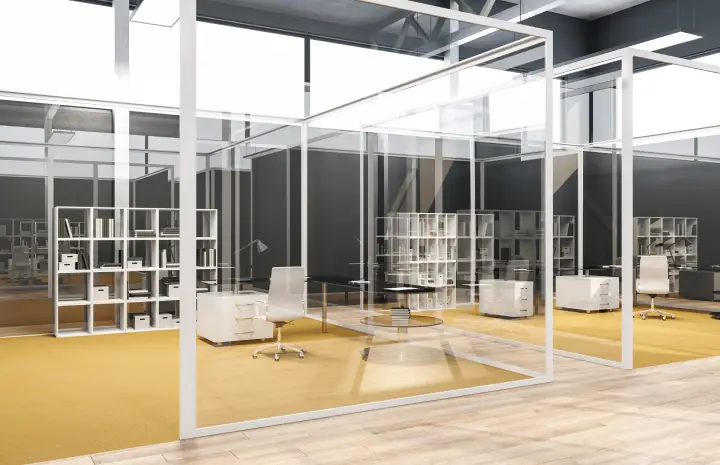Challenges and Solutions for Office Sliding Glass Partitions
In the evolving world of workspace design, Office Sliding Glass Partitions have become a defining feature of modern interiors. They create bright, open environments while offering privacy and flexibility—key elements in contemporary office architecture. Yet, like any sophisticated system, these partitions come with their own set of challenges during design, installation, and long-term use.
From acoustic performance and safety concerns to maintenance and structural stability, each challenge requires precise planning and skilled solutions. In this guide, we’ll uncover the most common issues businesses face with sliding glass partitions—and how to solve them effectively for a seamless, long-lasting installation.
The Rise of Sliding Glass Systems in Modern Offices
Today’s offices prioritize collaboration, transparency, and natural light. Traditional walls restrict visibility and limit creativity, while Office Sliding Glass Partitions offer the flexibility to transform open layouts into functional, semi-private zones.
These partitions are used for:
- Meeting and conference rooms
- Executive cabins and collaborative areas
- Co-working spaces
- Reception zones and corridors
However, integrating such transparent systems in a dynamic workspace demands technical and architectural precision. Understanding the challenges early helps ensure smooth installation and long-term satisfaction.
Challenge 1: Acoustic Privacy
While glass enhances openness and visual appeal, it naturally lacks strong sound insulation. Conversations or meeting discussions can easily carry through transparent walls—especially in busy offices.
Why It Happens:
- Glass is a hard, reflective material that amplifies sound waves.
- Gaps between sliding panels allow noise leakage.
- Frameless systems without seals offer minimal acoustic protection.
Solutions:
- Use Acoustic-Laminated Glass: Incorporate sound-insulating interlayers within glass panels.
- Add Perimeter Seals or Rubber Gaskets: These prevent sound from escaping between tracks and door edges.
- Install Double-Glazed Systems: Two glass layers with an air gap significantly reduce sound transmission.
- Include Soft-Close Mechanisms: This minimizes impact noise when closing partitions.
By combining acoustic design with aesthetic clarity, Office Sliding Glass Partitions can deliver both privacy and openness.
Challenge 2: Structural Stability and Alignment
Sliding glass partitions rely heavily on precise alignment for smooth operation. Even a small misalignment can lead to uneven panel gaps, jamming, or track wear.
Why It Happens:
- Uneven floors or ceilings during construction.
- Improper track leveling or weak anchor points.
- Overlooking building expansion joints that affect alignment over time.
Solutions:
- Conduct Structural Assessment Before Installation: Ensure floor and ceiling surfaces are level and stable.
- Use Adjustable Track Systems: Modern systems allow micro-adjustments to compensate for uneven surfaces.
- Install Support Frames: Reinforced aluminum or steel frames add rigidity in large glass spans.
- Schedule Annual Realignment Checks: Prevent long-term wear and tear through professional recalibration.
With precise engineering, Office Sliding Glass Partitions can operate smoothly for decades without sagging or misalignment.
Challenge 3: Safety Concerns
Glass partitions add elegance, but safety must never be compromised. Impacts from furniture, cleaning equipment, or human movement can pose risks if unsuitable materials are used.
Why It Happens:
- Non-tempered or low-thickness glass used in high-traffic areas.
- Poor edge protection or exposed hardware.
- Incorrect installation methods or unsupported spans.
Solutions:
- Use Tempered or Laminated Safety Glass: It resists impact and, if broken, crumbles into safe granules rather than sharp shards.
- Apply Protective Film: Adds an extra layer of strength and UV protection.
- Install Rounded or Covered Edges: Prevent injury from sharp glass corners.
- Follow Local Safety Codes: Ensure compliance with building standards and load-bearing regulations.
By integrating certified safety glass and secure framing, Office Sliding Glass Partitions can provide both transparency and protection.
Challenge 4: Track and Roller Maintenance
The movement mechanism—the track and rollers—is the most active part of any sliding partition. Dust, debris, or lack of lubrication can cause stiffness, noise, or even track damage over time.
Why It Happens:
- Accumulated dirt in floor tracks.
- Heavy usage without regular maintenance.
- Misaligned rollers or worn bearings.
Solutions:
- Use High-Quality Stainless-Steel Tracks and Bearings: They resist corrosion and reduce friction.
- Adopt a Regular Cleaning Schedule: Vacuum or brush track channels weekly to remove debris.
- Lubricate Every 6–8 Months: Use silicone-based lubricants for smooth movement.
- Install Concealed or Overhead Tracks: Ceiling-mounted tracks minimize dirt accumulation.
With routine maintenance, Office Sliding Glass Partitions retain their effortless sliding motion and elegant appearance.
Challenge 5: Privacy vs. Transparency
While transparency promotes openness and natural light, it can also lead to privacy challenges—especially in executive offices or meeting areas where confidentiality matters.
Why It Happens:
- Clear glass offers visual exposure.
- Lack of blinds or film solutions for flexible privacy.
Solutions:
- Use Frosted or Patterned Films: Add partial frosting or designs for semi-privacy.
- Install Smart Switchable Glass: Toggle between opaque and clear with a single switch.
- Add Internal Blinds: Between-glass blinds or external rollers give privacy when needed.
- Strategic Layout Planning: Position partitions away from direct sightlines to sensitive areas.
This balance ensures your Office Sliding Glass Partitions promote openness without sacrificing discretion.
Challenge 6: Temperature and Energy Efficiency
Glass can transfer heat quickly, making temperature control a concern in fully glazed offices.
Why It Happens:
- Large glass surfaces increase heat gain or loss.
- Uninsulated framing materials.
Solutions:
- Choose Low-E or Double-Glazed Panels: These minimize solar gain and improve insulation.
- Install Thermal Break Frames: Prevent heat transfer through the aluminum structure.
- Use Solar Films: Reflect UV rays and maintain interior comfort.
- Integrate Smart Climate Control Systems: Automatically adjust HVAC based on ambient conditions.
By addressing temperature control early, you make Office Sliding Glass Partitions both energy-efficient and sustainable.
Challenge 7: Cleaning and Maintenance
Glass surfaces require regular maintenance to retain their clarity and appeal. Fingerprints, dust, and smudges can quickly diminish the professional look of your workspace.
Why It Happens:
- Frequent human contact and air conditioning circulation.
- Inadequate cleaning tools or harsh chemicals.
Solutions:
- Use Microfiber Cloths and Neutral Cleaners: Avoid ammonia-based sprays that cause streaks.
- Apply Anti-Fingerprint Coatings: Special surface treatments reduce smudge visibility.
- Schedule Weekly Maintenance: Maintain shine without buildup.
- Train Cleaning Staff: Educate them on handling glass safely and effectively.
Clean and polished Office Sliding Glass Partitions enhance workplace aesthetics and brand image.
Challenge 8: Installation Complexity
Unlike simple drywall systems, installing sliding glass partitions demands technical expertise and precise measurements. Improper installation can lead to alignment issues or safety hazards.
Why It Happens:
- Incorrect leveling of tracks or panels.
- Inaccurate measurements or uneven wall conditions.
- Lack of professional experience.
Solutions:
- Hire Certified Installers: Experienced technicians ensure perfect alignment and sealing.
- Use Laser-Guided Tools for Precision: Maintain accuracy across all panels.
- Follow Manufacturer Guidelines: Every system has specific hardware and assembly requirements.
- Request Post-Installation Inspection: Guarantee performance and warranty compliance.
Professional installation ensures that Office Sliding Glass Partitions operate flawlessly and meet long-term durability standards.
Challenge 9: Cost vs. Quality Balance
Businesses often face budget constraints when choosing glass systems. Cutting corners on materials or hardware can lead to frequent repairs or early replacements.
Solutions:
- Invest in Quality Once: Premium systems last longer and need less maintenance.
- Opt for Modular Systems: Easier to expand or reconfigure later.
- Compare Total Lifecycle Cost: Consider durability, maintenance, and energy efficiency—not just initial price.
Strategic investment ensures your Office Sliding Glass Partitions remain functional and stylish for years.
Conclusion
Installing and maintaining Office Sliding Glass Partitions offers tremendous design value but requires thoughtful planning to overcome challenges related to sound, safety, alignment, and maintenance. With professional design, high-quality materials, and consistent care, these partitions can transform your office into a transparent, productive, and visually striking environment.
Whether you’re upgrading an existing workspace or building a new one, addressing these challenges with the right solutions ensures lasting performance and elegance—proving that beauty, function, and durability can coexist perfectly in modern office design.




